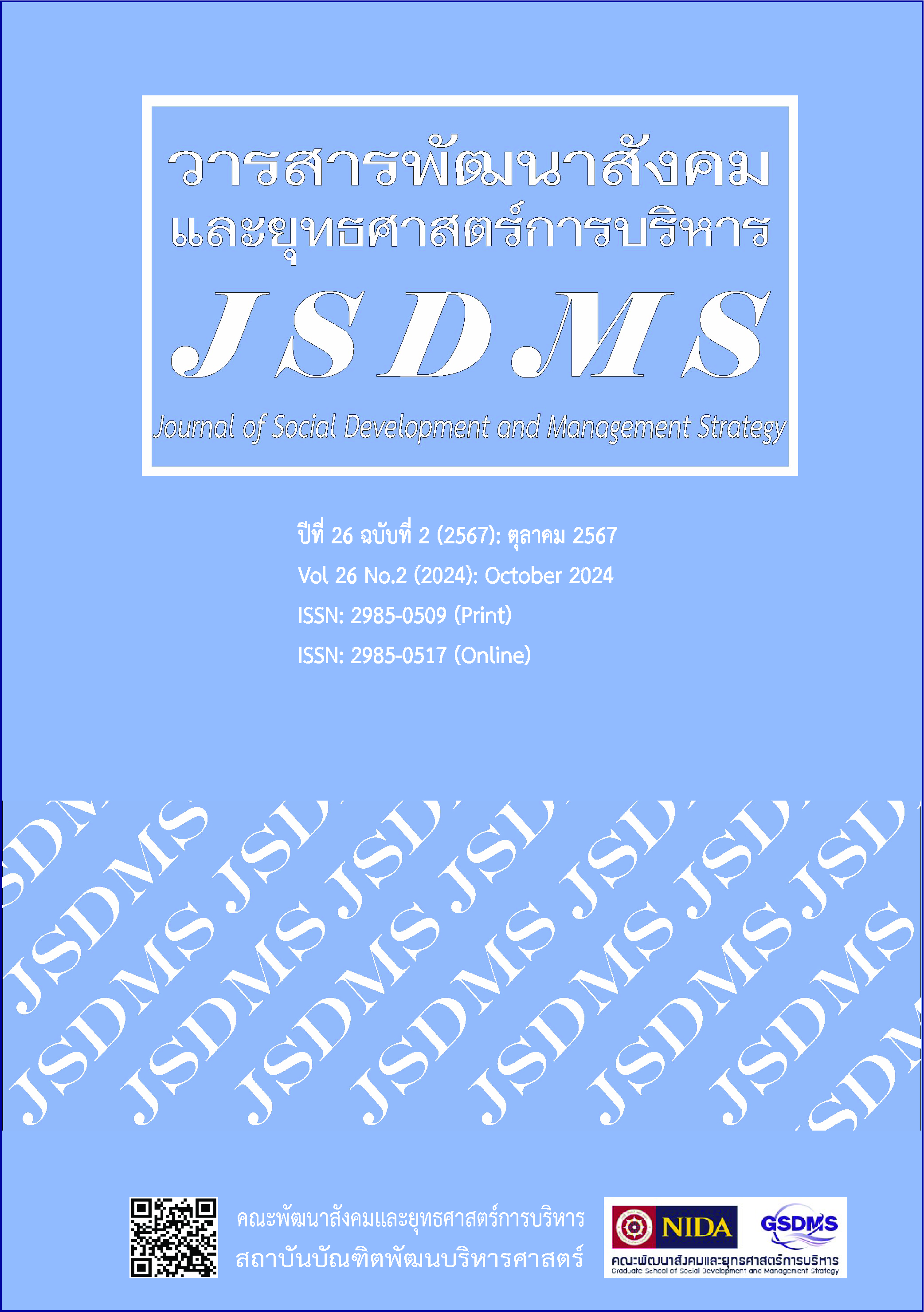Public Participation in Solving Drug Problems in a Community in the Southern Border Provinces
Main Article Content
Abstract
The objectives of this research were 1) to study public participation in solving drug problems in a community in the southern border province and 2) to compare public participation in solving drug problems in a community classified by gender, age, occupation, education level, income, length of residence in the community and current position. The samples used in this study were people aged 15 years and over, the village headman, the assistant village 1headman, the sub-district medical practitioner, the chairman of the subdistrict council, subdistrict council members, community committees, and village health volunteers (VHVs), totaling 231 respondents. Descriptive statistics and one-way ANOVA were used to analyze the data. The study found that public participation in solving narcotic drug problems in the community was moderate, with a mean of 2.58 (SD = 0.81). Comparative results showed significant differences (p < 0.05) in mean public participation scores between groups based on gender, income level, and length of time living in the villages or communities. The suggestions should encourage greater public participation in decision-making and operations, including a summary of the progress of operations. Therefore, the people will be aware of the benefits of participating, and this will create incentives to solve the drug problem sustainably.
Article Details

This work is licensed under a Creative Commons Attribution-NonCommercial-NoDerivatives 4.0 International License.
References
Athipong Tansiri. (2017). Public Participation in preventing and solving drug problems: A Case study of Klaeng District, Rayong province [In Thai] (Unpublished master’s thesis). Burapha University, Chonburi.
Damrongrit Bun-im. (2012). Community leaders’ participation in drug problem solving measures in Bang Mae Nang subdistrict, Bang Yai district, Nonthaburi province [In Thai] (Unpublished master’s thesis). Thongsook College, Bangkok.
Kitti Saengsirivut. (2003). Community leaders’ participation in preventing amphetamine problems in Prachuap Khiri Khan province [In Thai] (Unpublished master’s thesis). Nakhon Pathom Rajabhat Institute, Nakhon Pathom.
National Drug Treatment and Rehabilitation Information System. (2023). Drug treatment admission report in Thailand [In Thai]. Retrieved from https://antidrugnew.moph.go.th.
Office of the Narcotics Control Board, Ministry of Public Health. (2023). National drug treatment and rehabilitation information system (BST) [In Thai]. Retrieved from http://antidrugnew.moph.go.th.
Office of the Narcotics Control Board, Ministry of Justice. (2022). Action plan for preventing and solving drug problems [In Thai]. Babgkok: Author.
Panya Pispan. (2017). Public participation in preventing and solving drug problems in the Bo Win Subdistrict, Si Racha District, Chonburi Province (Unpublished master’s thesis). Burapha University, Chonburi.
Phroomwanat Mekhavanit. (2017). Community participation processes in preventing and solving drug problems in Phanat Nikhom municipality, Phanat Nikhom district, Chonburi province [In Thai] (Unpublished master’s term paper). Burapha University, Chonburi.
Teera Klaokla. (2005). Community organizations’ participation in preventing and solving drug problems: A case study of Mueang Kanchanaburi district, Kanchanaburi province [In Thai] (Unpublished master’s thesis). Kanchanaburi Rajabhat University, Kanchanaburi.
Wattana Suthonthai. (2008). Analysis of research instruments and test analysis. Bangkok: Watthanaphat.


